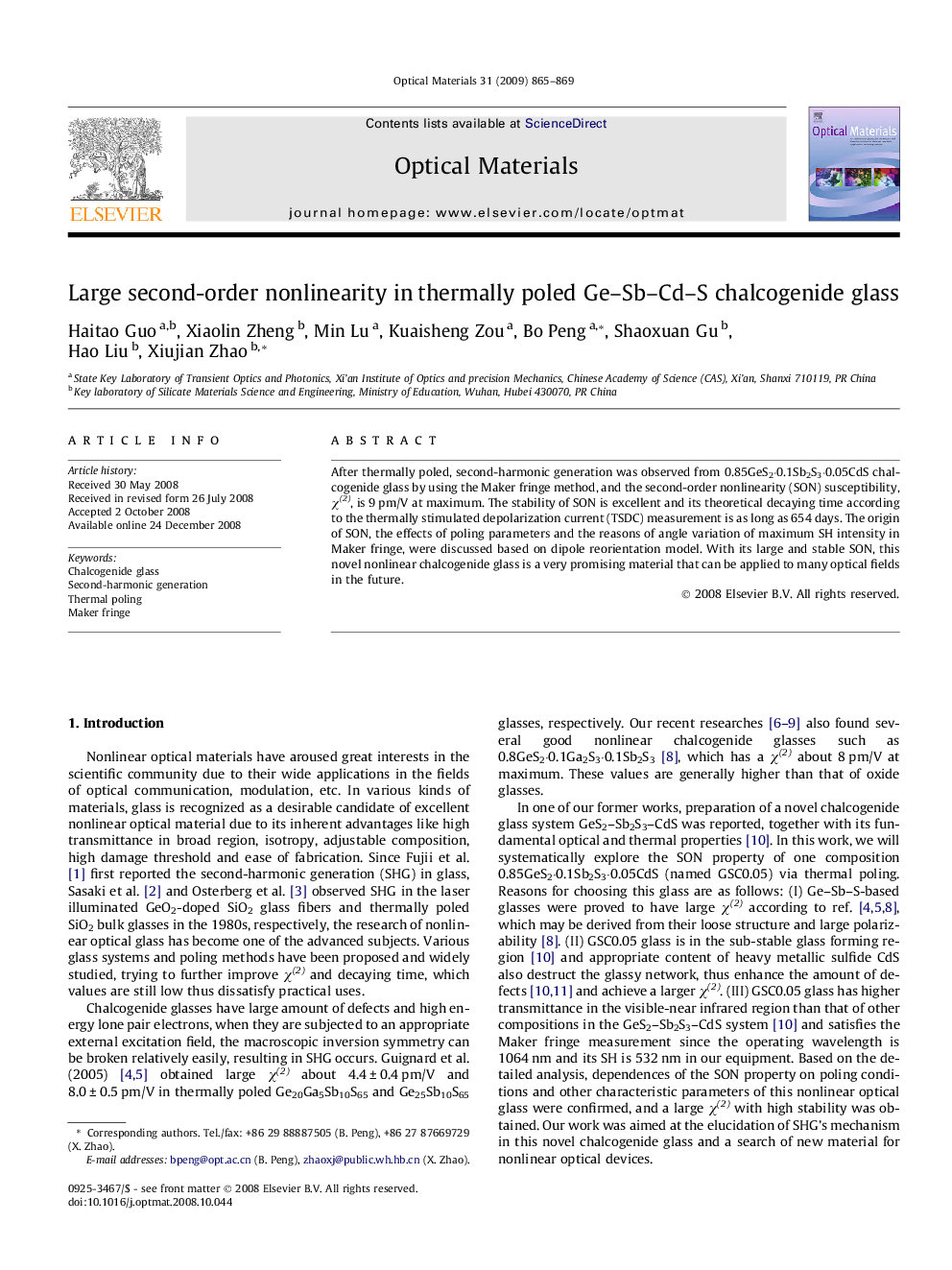| Article ID | Journal | Published Year | Pages | File Type |
|---|---|---|---|---|
| 1496052 | Optical Materials | 2009 | 5 Pages |
Abstract
After thermally poled, second-harmonic generation was observed from 0.85GeS2·0.1Sb2S3·0.05CdS chalcogenide glass by using the Maker fringe method, and the second-order nonlinearity (SON) susceptibility, Ï(2), is 9 pm/V at maximum. The stability of SON is excellent and its theoretical decaying time according to the thermally stimulated depolarization current (TSDC) measurement is as long as 654 days. The origin of SON, the effects of poling parameters and the reasons of angle variation of maximum SH intensity in Maker fringe, were discussed based on dipole reorientation model. With its large and stable SON, this novel nonlinear chalcogenide glass is a very promising material that can be applied to many optical fields in the future.
Related Topics
Physical Sciences and Engineering
Materials Science
Ceramics and Composites
Authors
Haitao Guo, Xiaolin Zheng, Min Lu, Kuaisheng Zou, Bo Peng, Shaoxuan Gu, Hao Liu, Xiujian Zhao,
